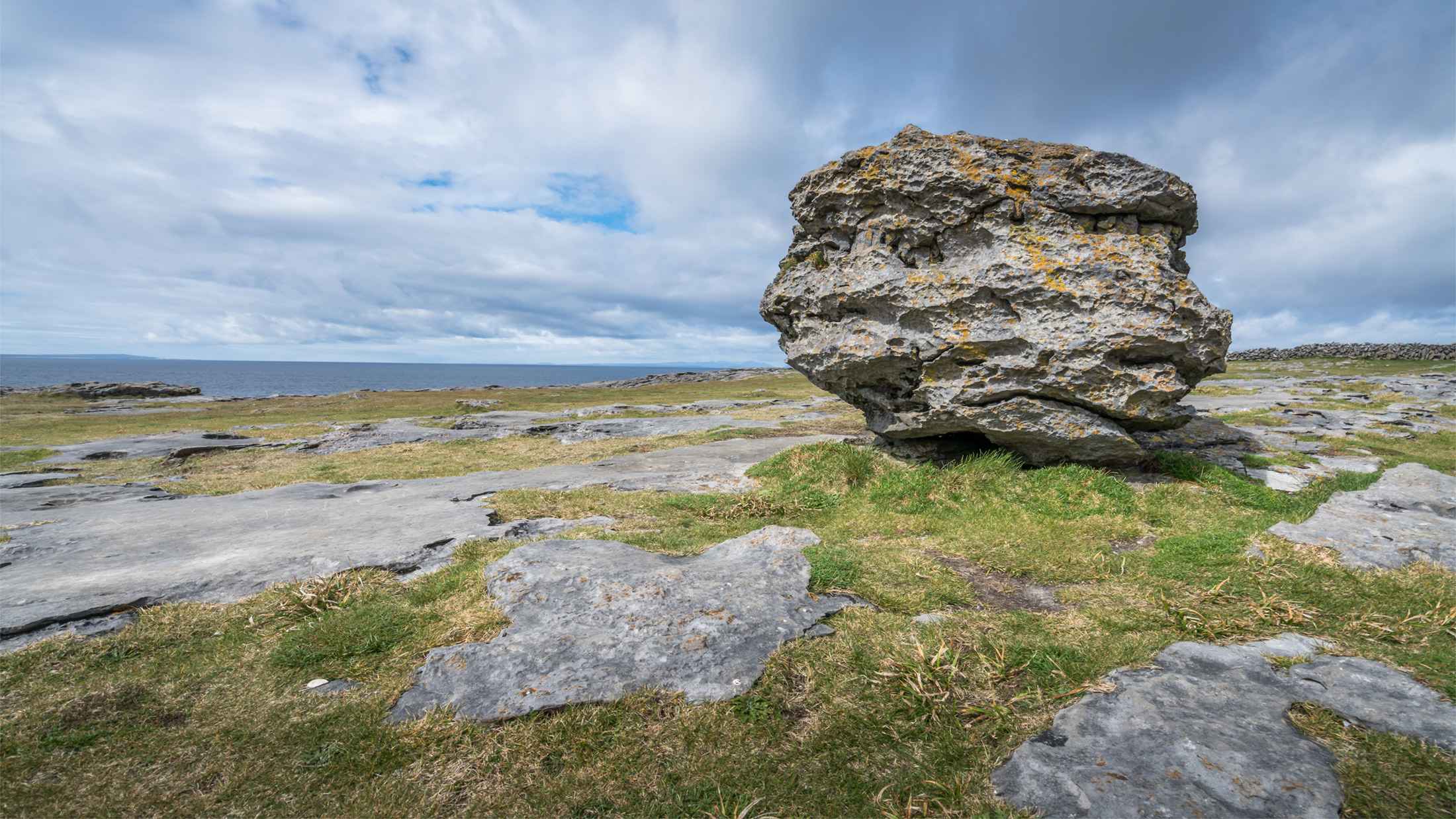
Glacial erratics, those massive boulders you often come across in unexpected places, hold a fascinating history that goes beyond their sheer size. These enormous rocks, often transported hundreds of miles by ancient glaciers, can be found perched on hilltops, nestled in forests, or even resting in the middle of a field. While they may seem out of place, glacial erratics are a testament to the power and movement of ice sheets that covered vast areas during the last ice age.
But there’s more to glacial erratics than meets the eye. In this article, we’ll delve into 15 surprising facts about these unique geological features. From their formation and transportation to their influence on landscapes and even human culture, you’ll discover the remarkable story behind these massive rocks. So, let’s embark on a journey through time and unravel the mysteries of glacial erratics.
Key Takeaways:
- Glacial Erratics are large rocks moved by glaciers, found far from their original location. They provide insights into past glaciation and serve as geological markers, inspiring art and conservation efforts.
- Glacial Erratics can be as small as pebbles or as large as massive boulders. They travel long distances, crossing borders, and even serve as habitats for diverse organisms.
What is a Glacial Erratic?
A Glacial Erratic is a large rock or boulder that has been transported and deposited by a glacier. These rocks are often found in areas far away from their original source, and their presence can provide valuable insights into past glaciation events.
Mysterious Origins
Glacial Erratics can come from different types of rocks and can vary in size and shape. They are often made up of hard, resistant materials such as granite, basalt, or quartzite. The origins of these rocks can be traced back to different geological formations and can be hundreds or even thousands of years old.
Erratics on the Move
Glacial Erratics are created when glaciers move, carrying rocks along with them. As glaciers advance and retreat, they pick up rocks from the land and transport them long distances. When the glacier eventually melts, it deposits the rocks in a new location, often far from where they originated.
Size Matters
Glacial Erratics come in all shapes and sizes. Some can be as small as pebbles, while others can be massive boulders weighing several tons. The size of the erratics is determined by the size and power of the glacier that transported them.
Traveling Across Borders
Glacial Erratics are often found in regions that were once covered by ice sheets or glaciers, including areas in North America, Europe, and Antarctica. These rocks can travel immense distances, sometimes crossing country or even continental borders.
Geological Markers
Glacial Erratics serve as important geological markers. By studying the type and distribution of these rocks, geologists can gain insights into the movement of glaciers and the history of glaciation in a particular region.
Erratics as Landmarks
In some cases, Glacial Erratics have played significant roles in local culture and folklore. These rocks have been named, revered, and even incorporated into myths and legends by indigenous cultures and early settlers who marveled at their presence and unique characteristics.
Balancing Act
Some Glacial Erratics are found in precarious positions, seemingly defying gravity as they perch on small points or edges. These balancing rocks have fascinated scientists and visitors alike, sparking debate on how they managed to stay in such improbable positions.
Coastal Glacial Erratics
Glacial Erratics are not restricted to land. In coastal areas, these rocks can be found in the ocean or along the shoreline, where they have been eroded and shaped by the action of waves and tides over time.
Glacial Erratics as Habitats
Glacial Erratics can provide unique habitats for a variety of organisms. The exposed surfaces of these rocks offer sheltered microenvironments where plants, lichens, and mosses can grow, supporting a small but diverse ecosystem.
Witness to Climate Change
The presence and distribution of Glacial Erratics can also provide evidence of past climate change. By studying the locations and characteristics of these rocks, scientists can reconstruct the movements of glaciers and gain insights into how climate patterns have evolved over time.
Artist’s Muse
The striking appearance of Glacial Erratics has inspired artists and photographers to capture their beauty and unique features. These rocks, with their contrasting colors, textures, and shapes, serve as captivating subjects and symbols of the natural world.
Erratics in National Parks
Glacial Erratics can be found in many national parks around the world. These parks often preserve the natural formations and landscapes left behind by glaciers, including the impressive and awe-inspiring Glacial Erratics.
Human Interaction
Glacial Erratics have long been objects of curiosity and fascination for humans. People have been known to climb on, explore, and even use these rocks for recreational purposes, highlighting the enduring appeal and allure that Glacial Erratics hold.
Conservation Efforts
The preservation and protection of Glacial Erratics and their surrounding environments are crucial for maintaining the integrity of these unique geological features. Organizations and initiatives work towards conserving and educating the public about the importance of these remarkable natural formations.
Conclusion
In conclusion, glacial erratics are fascinating geological features that have a rich history and provide valuable insights into Earth’s past. These massive boulders, carried by glaciers and deposited in new locations, defy expectations and often leave us in awe of the power of nature. From their varied sizes and shapes to their geological significance, glacial erratics continue to capture the interest of scientists, researchers, and nature enthusiasts around the world.
FAQs
Q: What causes glacial erratics?
A: Glacial erratics are formed when glaciers transport and deposit rocks that are different from the local bedrock. They are carried by the moving glacier and dropped off when the ice melts, leaving these large boulders in unexpected locations.
Q: How big can glacial erratics be?
A: Glacial erratics can vary in size, ranging from a few meters to several hundred meters in diameter. The size of the erratic depends on the size of the glacier that transported it and the distance it traveled.
Q: Are there any famous glacial erratics?
A: Yes, there are several famous glacial erratics around the world. One well-known example is “Big Rock” in Alberta, Canada, which weighs about 16,500 tons and is estimated to be over 10,000 years old. Another notable erratic is the “Balanced Rock” in Colorado, USA, which precariously balances a large rock on top of a narrow pedestal.
Q: What can we learn from studying glacial erratics?
A: Glacial erratics provide valuable insights into the movement and behavior of glaciers in the past. By studying their composition and characteristics, scientists can reconstruct ancient glacial paths, determine the source of the rocks, and gain a better understanding of climate change and Earth’s geological history.
Q: Are glacial erratics protected?
A: In many cases, glacial erratics are protected as natural landmarks or geological features. They may be included in national parks or conservation areas to preserve their scientific and cultural value. It is always important to respect and appreciate these unique formations without damaging or removing them.
Glacial erratics are fascinating, but they're just the tip of the iceberg when it comes to exploring our world. Discover how to create stunning outdoor spaces with our landscaping facts, or celebrate the unsung heroes of earth science on Geologists' Day. For a truly rockin' experience, dive into our geology fun facts and unearth the secrets beneath our feet. From the backyard to the furthest reaches of the planet, there's always something new to learn and appreciate.
Was this page helpful?
Our commitment to delivering trustworthy and engaging content is at the heart of what we do. Each fact on our site is contributed by real users like you, bringing a wealth of diverse insights and information. To ensure the highest standards of accuracy and reliability, our dedicated editors meticulously review each submission. This process guarantees that the facts we share are not only fascinating but also credible. Trust in our commitment to quality and authenticity as you explore and learn with us.


